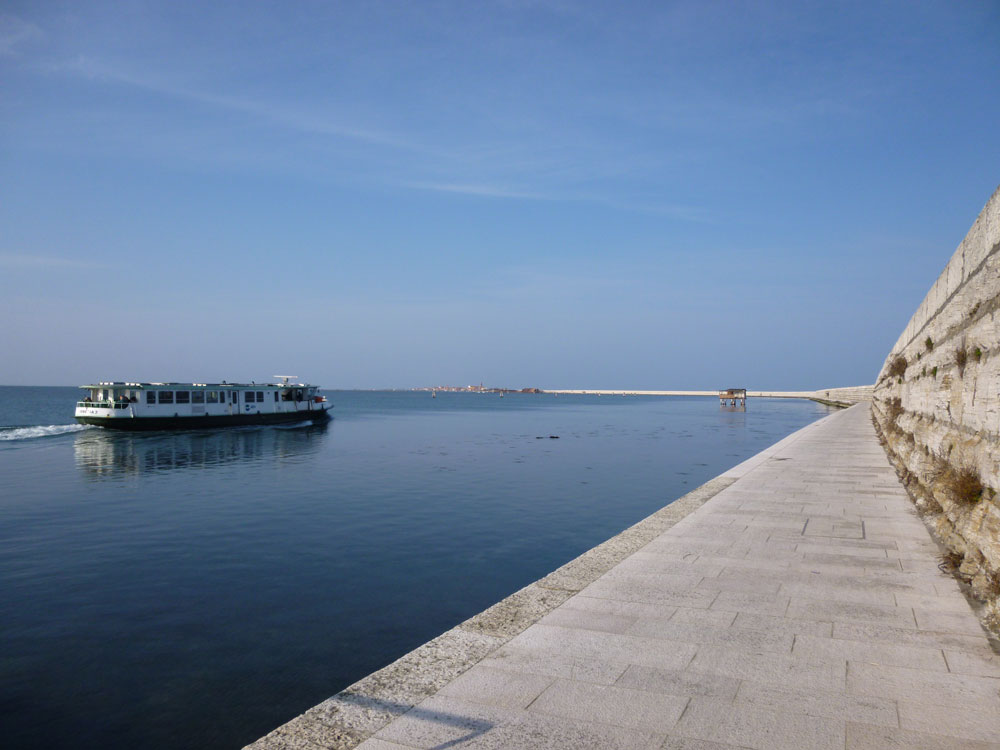Chioggia is a fishing port at the southern end of the Venetian lagoon. It’s picturesque in an unpretentious kind of way, and makes an interesting day trip. Taking public transport from Venice to Chioggia (or vice versa) is time-consuming, but the journey around the outer rim of the lagoon can be part of the day’s entertainment. It may be the weirdest public transport journey you’ve ever taken.
Travel to Chioggia from Venice
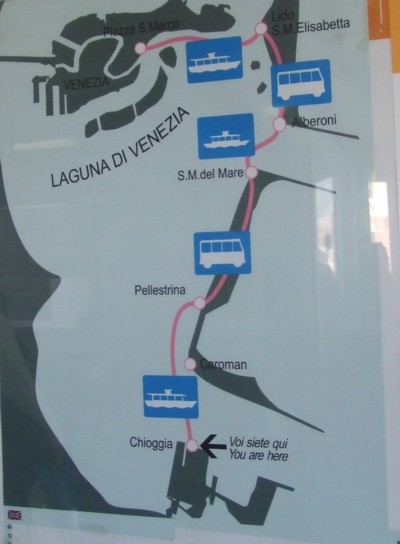
For the long but interesting route, head first of all from Venice to the Lido (ferries 1, 5.1, 5.2, 6 etc. – check the ACTV timetable to find your quickest route). The Lido is one of the long thin islands separating the Venetian lagoon from the Adriatic sea. You are going to travel down the length of this piece of land, then down the next long thin island, then over the lagoon to Chioggia, which is on an island nestled into the southernmost corner of the lagoon. One ACTV transport route, the number 11, takes you all the way, by a combination of vehicles. The trip takes an hour and fifteen minutes, and if you already have a travel pass for transport in Venice, this should be valid for the journey; single tickets may run out of time (they are valid for specific numbers of minutes), so you may need to use two.
Once you have arrived on the Lido and alighted from your ferry at the main Santa Maria Elisabetta stop, the next stage of your journey is by bus. The bus stop for the number 11 is alongside the ferry jetties. Departures are usually half-hourly, but check timetables. Try to get a seat for the long journey; when I last made the trip the service operated a little convoy of two vehicles so there was more space for passengers. There are some cheap restaurants and bars around here, if you want to refuel before moving on.
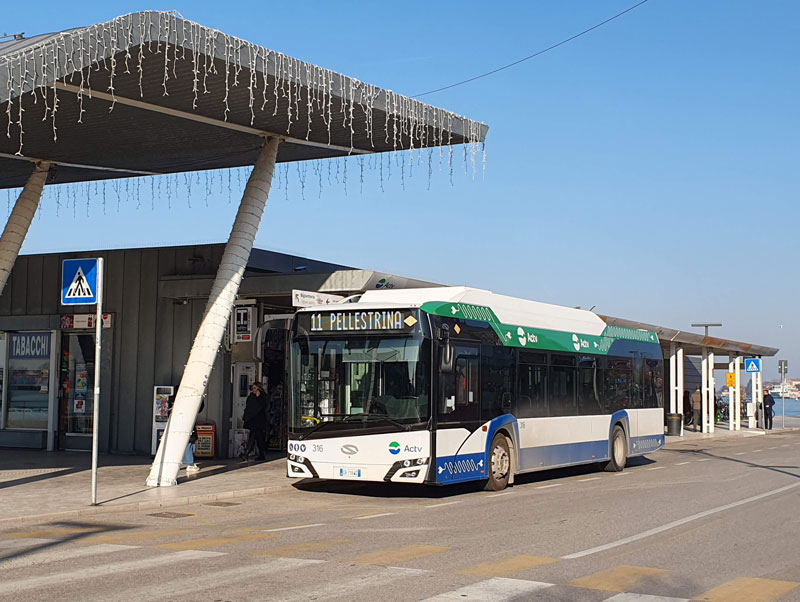
The bus runs southwards down the entire length of the Lido, past the seafront buildings of the old Casino and the Palazzo del Cinema, home to the Venice Film Festival. The built-up areas merge together as you head south. Out in the waters, on the seaward side of the modern settlement of Malamocco, is supposedly a lost island. History traditonally states that the early lagoon-settlers had their capital on an Adriatic island called Malamocco, now vanished beneath the waves.
At Alberoni, the leafy southern tip of the Lido, the bus drives onto a ferry. This crosses the central mouth of the lagoon, the Porto di Malamocco, to arrive in Pellestrina, an even thinner island running along the gigantic eighteenth-century sea walls, the murazzi.
Pellestrina is a strange and strung-out fishing village with its face to the lagoon and its back to the high white sea walls. The bus finishes its run by the town’s cemetery next to a landing stage. If you have time you could break your journey here to see Pellestrina before catching the next service onwards to Chioggia.
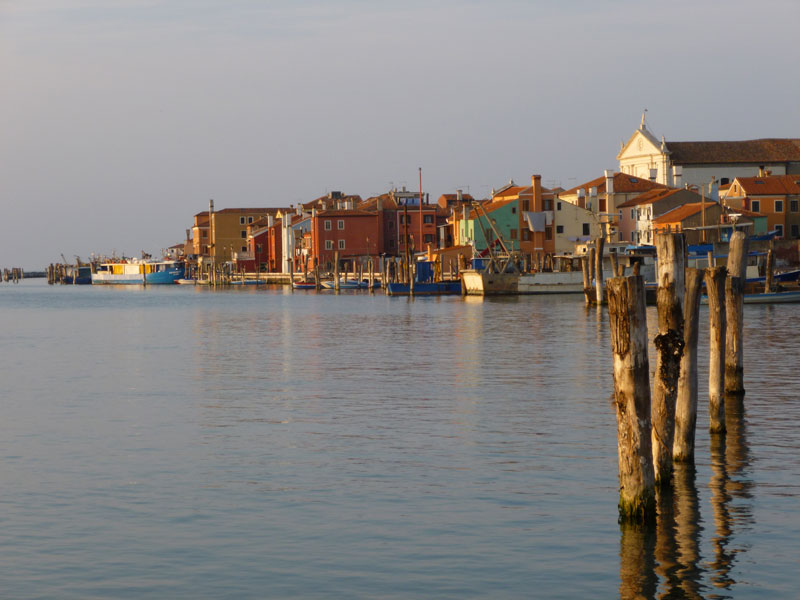
Passengers then make the final leg of the journey on a passenger ferry which travels along the sea walls, past fascinating lagoon scenery where the waters are dotted with ramshackle fishermen’s huts on stilts among their mussel farms. The walls extend for miles; an impressive piece of engineering completed in the dying days of the Venetian Republic. There is an additional ferry stop out here, Caroman, (only some services will call in and in the winter it is by request only) where there is a wildlife reserve. The name was once Ca’Roman, Roman house; the site’s history goes back a long way.
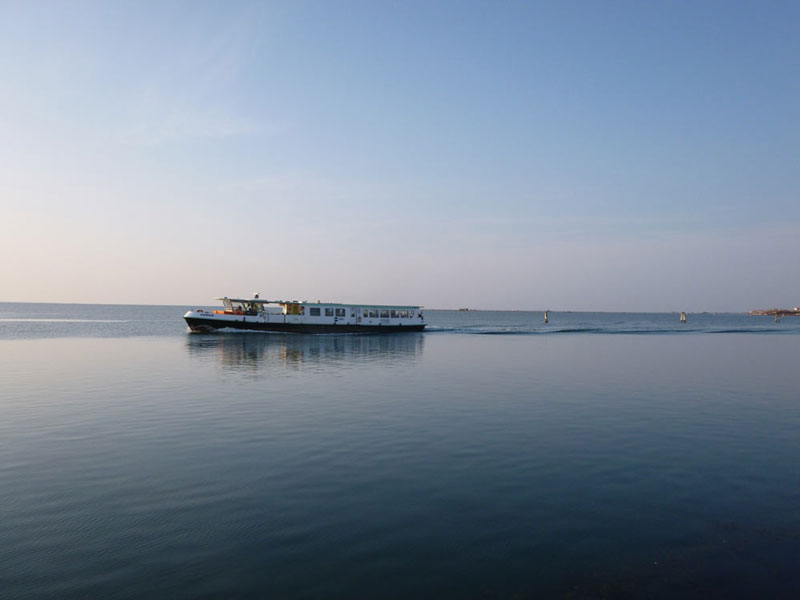
The boat then crosses the lagoon’s most southerly opening, the Porto di Chioggia, guarded by an old fortress. Here you may see fishing boats heading out to sea, or coming home with their catch. The passenger ferry follows the same path as the fishermen, veering into a little port at the northern end of the historic part of Chioggia.
The Lido, Pellestrina and Chioggia all offer opportunities to keen cyclists. You can take bicycles on the ferry from Pellestrina to Chioggia: you may need to buy a special ticket so ask for advice at an ACTV kiosk before you travel.
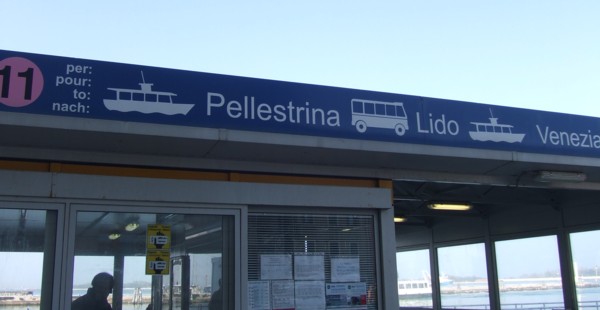
Alternative travel
If you don’t fancy this varied journey, there is also an ACTV/Arriva Veneto bus from Venice to Chioggia and Sottomarina. This service, the 80E, leaves from Piazzale Roma every half-hour, and the drive to Chioggia takes around an hour. Ticket and timetable info: https://www.arrivaveneto.it/
If you are staying in Chioggia and wish to visit Venice for a day trip, there is a direct boat service, the Linea Clodia, which leaves every morning and returns in the evening, leaving Venice. Check the latest times as these are subject to change.
A spell-bindingly odd day out
One memorable day in early spring I visited Chioggia taking this long and scenic route. After a cheery boat trip, a wander and some photography, I headed back to Venice. But instead of staying on the ferry from Chioggia to Pellestrina, I alighted at Ca’ Roman. I explored the island nature reserve, which is dotted with military ruins. Then I walked along the sea wall between the lagoon and the Adriatic, enjoying the rays of the sinking sun. Arriving on foot in Pellestrina, I caught the next bus towards the Lido and resumed my journey. The island, lagoon and sea wall made for a strange and haunting experience.
> Chioggia, Ca’ Roman and an eerie walk off the beaten track (my blog article)
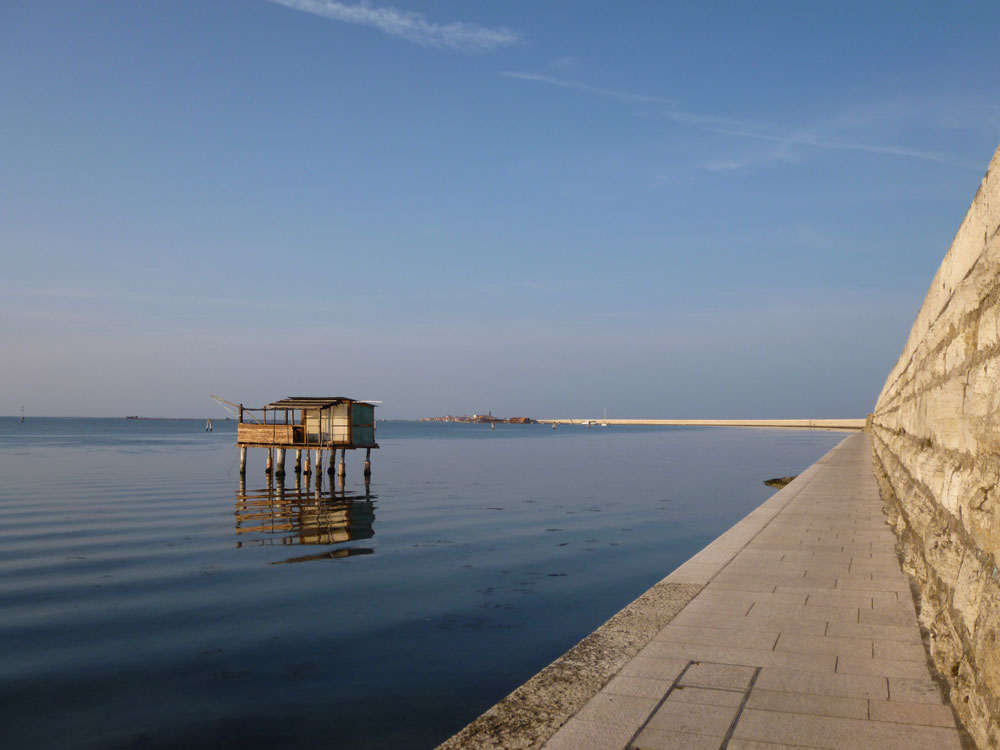
On this site
